Would an Antimatter Magnet Attract a Normal Matter Magnet?
Why do you see flashes and patterns when you press your eyeballs? Would an antimatter magnet attract normal matter magnets? What is the hardest human bone to break? We take on your science questions this week, as well as explore the bed of Lake Windermere the gravity hills of Barbados and the first discovered habitable exoplanet. Plus, a flapless aircraft takes flight, how the brain decides which hands to use and why Raman spectroscopy offers a rum deal for anti-drug squads. In Kitchen Science, we find out why spit can form strings of beads...
In this episode

01:46 - Flapless Aircraft takes to the air
Flapless Aircraft takes to the air
Ever since the Wright brothers first took to the air in 1908 aircraft have been controlled by moving surfaces in order to deflect air in different ways, in a conventional plane, elevators, aerolons etc. In most cases this isn't a major issue, but these moving surfaces can be a maintenance headache, create lots of noise, and in a military aircraft ruin your carefully crafted stealthy shape.
Researchers from BAE systems, Cranfield and Manchester University have flown the  first aircraft without moving any surfaces at all, instead they have been controlling it using something called the Coanda effect, the tendency of a stream of fluid to stick to a curved surface. Like the way a stream of water from a tap will stick to the back of a spoon. At some point however the air will detach from this curved surface, and it is relatively easy to affect this point. The team has used air blown from a jet engine on a Demon UAV, to alter the direction air leaves a wing, this affect the amount and direction of lift produced, so allowing them to control the aircraft.
first aircraft without moving any surfaces at all, instead they have been controlling it using something called the Coanda effect, the tendency of a stream of fluid to stick to a curved surface. Like the way a stream of water from a tap will stick to the back of a spoon. At some point however the air will detach from this curved surface, and it is relatively easy to affect this point. The team has used air blown from a jet engine on a Demon UAV, to alter the direction air leaves a wing, this affect the amount and direction of lift produced, so allowing them to control the aircraft.
This will probably appear in military aircraft long before airliners, but some related technologies could be used to reduce the noise from aircraft taking off and landing and would be more practical.

04:13 - Hand preference arises from a competition in the brain
Hand preference arises from a competition in the brain
Researchers writing in the journal PNAS this week have come a little bit closer to understanding how the brain chooses which hand to use for any particular action. They think it comes down to a mental competition between the hands.
Flavio Oliviera and his team (from the US and Belgium) collected together a group of  right-handed people and instructed them to reach for images placed on a table. The participants could use either hand to pick the images up, and these images were in different places on the table.
right-handed people and instructed them to reach for images placed on a table. The participants could use either hand to pick the images up, and these images were in different places on the table.
While this was happening, the researchers applied transcranial magnetic stimulation (TMS) to the brains of the participants. This temporarily disrupts brain activity in the subjects' left or right posterior parietal cortex. As the name suggests, it's at the back of the brain and it's important for planning movements or thinking about 3D space around you.
When TMS was applied to the left side the right-handed participants tended not to use their right hands as much as they would normally. But applying TMS to the right side of the brain produced no change at all. The left side of the brain is usually involved in controlling the right side of the body, and vice versa, so you might expect this result in right-handed people.
The researchers think that when we have to make a decision on which hand to use to press a button, our brain is actually coming up with several plans on how to achieve this, but it selects whichever plan it thinks is the best - using this area of the brain: the posterior parietal cortex.

06:30 - A new Earth-like exoplanet
A new Earth-like exoplanet
with Professor Steve Vogt, University of California at Santa Cruz
Chris - Also in the news this week, astronomers at the University of California, Santa Cruz and also from the Carnegie Institution of Washington have announced the discovery of an Earth-like planet that's outside our own solar system. It's thought that liquid water, as well as an atmosphere, could exist on that planet's surface, which would make it potentially the first habitable exoplanet. And joining us from the University of California, Santa Cruz to tell us more about the discovery is one of the co-authors of the paper, Steven Vogt. He is the Professor of Astronomy and Astrophysics. Hello, Steven.
Steven - Hello, Chris.

Chris - Thank you for joining us on the Naked Scientists. The first question I think probably to kick off with is, where is this planet?
Steven - This is in the constellation of Libra. It's about 20 light years away, so it's one of the nearest stars and it's a pretty exciting star to be looking at.
Chris - What's the name of the star?
Steven - The star is called 'Gliese 581 g.' That's after a catalogue of nearby stars by a man named Gliese basically. So it's number 581 in that catalogue.
Chris - And how did you actually spot the planet or planets because this isn't the first planet that's been spotted around that star?
Steven - That's right. A number of groups have been observing many of the nearby stars for many years. The Swiss group from Geneva has already detected four planets around this system over the last four or five years, using about four years' worth of data. And we've now found two more in the system.
Chris - So talk us through the experimental methods you used because even though something is relatively close, 20 light years, it's still far enough away that conventional telescopes are going to find that tricky. So, how did you do the study?
Steven - The study is done by measuring the velocity of the star. We take a spectrum of the star and measure the shifts - the Doppler shifts of the lines. Every night, we get one data point basically, so we have hundreds of nights of observations on there, and we're basically measuring how the planet tugs on the star. This particular Earth-like planet tugs on the star at a level of about 1 meter a second, so it makes the star sort of stroll back and forth with a period of about 37 days.
Chris - So because the planets in orbits are making the host star wobble a bit, you can pick up that wobble because it makes the light which is coming to us from that star get a bit stretched out or shrunk a bit and we can pick that up. That tells you that there's something pulling on the star, but how do you resolve individual planets because as you've already mentioned, there are a number of planets going around that star?
Steven - That's right. There are six of them now, so each one pulls with its own period and these are strictly periodic Keplerian motions and we fit these out using very sophisticated computer programs, and we strip them out one at a time. With each new planet, once we remove it from the system then we'd look at the residuals and look for periodicity in the residuals, and we work our way down through the system one at a time. So the overall dance that is done with six planets is quite complex, but we have mathematical techniques to follow that.
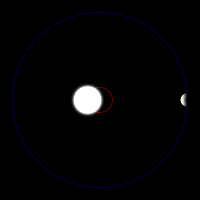
Chris - So presumably, you have worked out the only possible solution to all these different wobbles is, if you've got a planet which you say is Earth-like, it's in what's called a 'habitable zone' around that star. So, what can you tell about that planet?
Steven - Well, what we know about it is that we know its mass. We know we have a lower and an upper limit to its mass. It's about three to four times as massive as the earth. We know what it's made out of. If it was made out of Styrofoam or marshmallow cream, it would be one temperature and one size. We know it's made out of the sort of stuff that planets are made out of, mostly iron and silicate - things like that. So we have a pretty good estimate of what its radius would be from very detailed models. And that turns out to be about 20 to 50% bigger than the Earth, and spherical. It would be a spherical ball. It wouldn't look like a doughnut or something like that. So now we know its gravity basically. We know its surface gravity and we know how effectively it could hold on to its atmosphere. And it turns out to have about an Earth gravity, maybe a little bit more. So if you stood on a scale on the surface of that planet, you wouldn't be too shocked, your weight would be about the same as you weigh on Earth.
Chris - A relief for many people. What about the conditions on the planet? Can you infer anything about what it would be like if you were to go there?
Steven - Yes. Actually, we know a fair amount about that. We know that the planet is tightly locked to its star, so it keeps one face towards its star all the time. Just the same way that the moon keeps its same face towards the Earth all the time, and that would mean that it would have a hot side and a cold side, and then a whole bunch of temperatures, a range of temperatures in between. So the area between the bright and the darkness, what we called a terminator would be the most comfortable. And much of that would be shirt-sleeve weather. You could just stand outside and there would be mild winds, mild breezes, but it would be temps of basically about 20 to 40 degrees Celsius, so it would be quite cool, quite nice. And presuming that it had an atmosphere, there would probably be liquid water on the surface either in vast quantities or in small quantities. So it'd be quite a pleasant place to be.
Chris - Which is encouraging and just to finish off, given that you found this relatively hospitable sounding place, relatively easily, what does this tell us about the prospects of finding more like it elsewhere in the Milky Way because our own galaxy has got what, two hundred billion stars in it?
Steven - Yes and to me, that's one of the most interesting things to this discovery. It occurred too quickly and too nearby. We shouldn't have found it that soon, and that means one or two things. Either we've been really lucky and we won't find another one again for a long, long time, or there's a lot of them out there. I'd prefer the second hypothesis that there are a lot of them out there, and if you work out the statistics of the numbers from our incompleteness of our surveys, you find that probably 10 to 20% of stars have planets like this. And that means tens of billions of these places in our own galaxy and that's quite exciting.
Chris - Certainly is an intriguing thought. Thank you very much Steven for joining us. Steven Vogt from the University of California, Santa Cruz.
12:36 - Double current in solar cells
Double current in solar cells
At the moment solar power is significantly more expensive than fossil fuels and there are tens of thousands of researchers trying to reverse this. However this isn't really just ![]() a case of making the solar cells themselves cheaper because even now in the western world half of the cost of installing solar panels is in the installation. So the best way of making the electricity cheaper is to get more electricity per square metre of panel.
a case of making the solar cells themselves cheaper because even now in the western world half of the cost of installing solar panels is in the installation. So the best way of making the electricity cheaper is to get more electricity per square metre of panel.
The problem is that different colours of light have different energies and a conventional solar cell can only be designed around a single energy called the band gap. This means that it can't absorb light with a lower energy than this, and any extra energy a light photon has is wasted as heat. This means that the theoretical maximum efficiency for a simple solar cell is about 31%.
One solution to this would be to find a material that would push two electrons around the circuit, if the energy of the photon was twice the band gap. This would mean that you could make the band gap a lower energy so that more colours of photon can be absorbed, without loosing the efficiency at higher energy photons. This effect has been observed in solid lumps of semi-conductor but is very inefficient - you need far more than twice the band gap energy to push 2 electrons.
Justin Sambur and collegues have been investigating this property in quantum dots, these are tiny lumps of material, in this case lead sulphide, which are so small that their energy levels start to look more like an atom's than a bulk material, but an atom whose properties you can engineer. They have built structures of lead sulphide nano-dots attached to titanium dioxide semiconductors. Although these absorb a tiny proportion of the light hitting them, as they are extremely thin, when they increase the energy of the photons to be more than twice the band gap, they see almost a doubling in the current produced, so they are producing multiple electrons per photon. Though it will take a lot more development to get a practical cell.
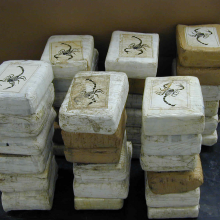
15:16 - Raman Spectroscopy Offers Rum deal for Anti-drug Squads
Raman Spectroscopy Offers Rum deal for Anti-drug Squads
A trick of the light looks set to assist drug squads in their attempts to crack down on smugglers.
 As anti-drugs systems improve, traffickers are resorting to increasingly imaginative practices to dodge detection. For instance, one approach adopted recently is to dissolve drugs like cocaine in liquids,such as alcoholic beverages like rum. The illicit substances are then later recovered from the rum by allowing the liquid to evaporate, leaving behind just a drug-laced powdery residue.
As anti-drugs systems improve, traffickers are resorting to increasingly imaginative practices to dodge detection. For instance, one approach adopted recently is to dissolve drugs like cocaine in liquids,such as alcoholic beverages like rum. The illicit substances are then later recovered from the rum by allowing the liquid to evaporate, leaving behind just a drug-laced powdery residue.
But this practice means that, to confirm any suspicions they may have of a cargo en-route, customs officers are forced to open dubious-looking bottles, compromising the contents regardless of what is found. Now, however, scientists in the UK have found a non-invasive way to see what's inside a bottle, but without having to resort to a corkscrew.
Writing in the journal Drug Testing and Analysis (DTA), Bradford University-based chemist Tasnim Munshi and her colleagues show that laser light can be used to force a liquid to surrender the secrets of its dissolved content. The approach makes use of a technique called Raman spectroscopy.
When laser light interacts with a material the arrangement of atoms and molecules in the substance causes the light to scatter in a highly characteristic way; different substances therefore have their own specific Raman "fingerprint" which can be picked up using a handheld gadget.
The team made solutions of cocaine in pure ethanol and also tested samples of well known rum brands including Lamb's Navy Rum, Bacardi and Captain Morgan, which were placed in either plastic or glass bottles. By using two different wavelengths (colours) of laser light so they could even see into dark green glass bottles, the technique readily picked up the spectroscopic hallmark signalling the presence of cocaine within the beverages.
Importantly, the cocaine concentrations at which the tests were carried out successfully were far lower - at 6% - than the concentrations used by smugglers - which are closer to 60%. Until now it has been difficult to detect cocaine in liquid form in these environments.
"Our study shows that using an analytical technique such as Raman spectroscopy can successfully detect the presence of these drugs without removing specimens from their containers," says Munshi. "We believe a portable Raman instrument will prove vital in the fight against illegal drug smuggling by allowing for the fast and effective screening of different solutions over a very short space of time."
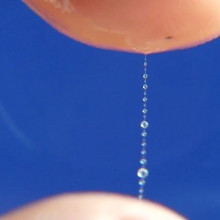
Stringy and bobbly spit - why spit beads
A very simple experiment, with spit

What causes the bright patterns when you rub your closed eyes?
Chris - What you're doing when you're squeezing on your eye ball, it's triggering what's called an 'entoptic' phenomenon. In other words, it's a visual hallucination originating from inside your own eyeball.
When you apply pressure to the eyeball, what you're doing is pressing on the retina, and the retina is the extremely complicated, cell-rich, very highly metabolically-active structure that turns light waves into brain waves, to put it simply.
When you apply pressure to the retina, two things happen. One, you deform the retina a little bit and this makes the photoreceptors, which are the specialised rod and cone cells that pick up photons of light, change their pattern of firing activity in response, which is how we see.
The other thing that pressing on the retina would do is it may affect its ability to pick up oxygen from the blood, because the photoreceptors are right at the back of the eye, close to something called the choroid plexus.
The choroid plexus is a very dense network of blood vessels. In fact, the retina has one of the highest metabolic rates of any tissue in the body and if you affect the way at which oxygen moves out of the choroid plexus and into the photoreceptors - for even a fraction of a second - they start to deliver abnormal firing activity, which you see as funny "lights".
You might have also seen this if you stand up quickly out of a hot bath. You may have noticed a similar strange wooziness, but also, you'll have noticed some perhaps funny lights in front of your eyes. That's because your blood pressure temporarily dips when you stand up and you deprive the photoreceptors of their oxygen supply momentarily, and they respond by firing off these blazes of colours.
So, in summary, it's an entoptic phenomenon secondary to physical deformation of the retina, but also probably because you're affecting the ability of the retina to grab its oxygen supply.

From where do magnets obtain their "energy"?
Dave - Okay. In order to create a magnet, you've actually got to put some energy in in the first place, including for a permanent magnet. You've got to align all the atomic magnets inside the piece of iron and rotate them so their individual magnetic fields all add together. That takes some energy to do initially, but once that state is in place, you don't require any more energy to maintain it. It's a bit like saying, "Why does the Earth keep attracting us forever with gravity?" They're just forces which exist forever.
The actual magnetism in a piece of iron or in a permanent magnet is actually caused essentially by electrons orbiting in one direction more than the other, and the electrons are going to keep on orbiting, as far as we know, indefinitely, unless something interrupts them. So the little atomic magnet is going to carry on forever. There's no reason why the magnet shouldn't carry on.
Chris - It's basically not burning off any energy to make the magnetic field, and it's something interacting with the field that actually makes an effect rather than the other way around.
Diana - But why is it then that some magnets get demagnetised over time?
Dave - Okay. The atomic magnets would stay magnetised, but, if you drop them, you can cause them to re-align a bit every time you drop them. Also, if they get very hot, they can get re-aligned as well. So, the atomic magnets are still there, but instead of all pointing the same direction they start to become more and more randomly organised, so the overall field is less and less, and less.

When will telescopes see exoplanets directly?
We posed this question to Steven Vogt from the University of California, Santa Cruz...
Steven - Well that will happen fairly quickly. I don't know if it will be with this particular system, but we're working very hard on what are called 'extreme adaptive optic systems' for our ground based telescopes that remove the effect of the Earth's atmosphere and seeing as it were, to allow us to look in real close. And so, we have a number of projects like that underway that will be used with large telescopes to be able to see in very close.
For something like this which is in so very close, it will probably take a space based effort where we actually build fleets of telescopes that operate together in space just like a flying interferometer. They can then block out the intense light from the star and allow you to see in very closely and that's probably 10 to 20 years away.
Chris - But it's still close enough that in our lifetimes, we're actually going to begin to really see places resembling the Earth, but not in our own solar system which is originally a kind of gob smacking thought, isn't it?
Steven - Yes, this is a long way away from our solar system even though it's a very nearby star. It's 20 light years away. What's even more exciting to me is that one could imagine using nuclear pulse rocket technology - basically take all the world's war heads, nuclear warheads, and load them up into a rocket ship - you could get up to about a tenth of the speed of light in about a month and as a tenth to the speed of light, you could reach this thing in 200 years, and actually you know, send a cell phone out there and take pictures and send it back. Send back tweets, so that would be kind of fun to do.
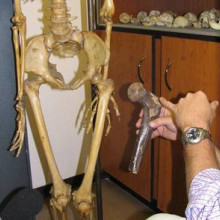
What is the hardest bone in your body to break?
Diana - Okay. Well I reckon it's the petrous part of the temporal bone and you can find the temporal bone in behind your ear, underneath your ear.
The petrous part of it is this really solid, sort of stony (which is what petrous actually means) bit of bone which goes around all your auditory canals and it's the bit of bone that survives really well in archaeology as well. I mean, you can bash it and it just stays in one piece.
But a lot of people say that the femur is also a really hard bone to break because it's quite solid. It is sort of thick and it is your thigh bone, but I reckon the petrous part is the best contender.
Dave - I guess there's two different questions. One is, how strong is the bone and also, how likely is it to get damaged? Your femur might be incredibly strong, but it's also kind of a major structural part of your body and when you fall off a motorbike, it gets bashed really hard.
Diana - Exactly, yeah. It's one of those that you're more likely to injure. The malleus, the incus, and stapes, the little tiny, tiny bones inside your ear are probably the hardest to break because they're so hard to get to, but, you know, if you took them out, and gave them a good bashing, they'd break very easily.

What keeps the brain in place after a hemispherectomy?
If you look at what brain tissue is like, it is very soft and floppy. It's almost like blancmange, the consistency of fresh brain tissue.
You're right that, when someone actually has to have a portion of their brain removed, it would leave a very big space because the volume of an adult human brain is about 1.5 to 1.3 litres, 1300 centimetres cubed.
So it's quite big and, if you removed half of that from your head, then you'd obviously have a space which is about 700 ml of empty space.
Now people did originally worry that there might be a problem with what to do with this empty space inside the head of someone who's had half of the brain removed.
Let's just revise why people might have that done. If you have got some kind of problem for instance intractable epilepsy of which this was performed quite often in the past, relatively speaking especially in young children for which their recovery actually is really good. They get back pretty normal life actually, after having this done. It sounds pretty draconian, but it works very well.
What you then end up with is a space in the head and you've got to fill it with something. Well, people did worry that this would be a problem but what they discovered in the long term is that in fact, it fills up with cerebrospinal fluid, the same stuff that bathes the brain and spinal cord anyway and there doesn't seem to be a major problem.
The brain is quite well supported inside the head and although it is floating in this bath of CSF (Cerebrospinal Fluid), actually, there are various supporting structures which help to hold the brain in one position.
And going from front to back, so if you imagine if you had your fingers in the middle of your forehead and you ran your fingers backwards vertically over the top of your head towards the middle of the back of your head, there is a piece of tissue called the falx cerebri which inside your skull follows a sort of similar course to that, and that holds your brain in and stops it going from side to side.
At the back of the head there is also a structure called the tentorium cerebelli which is a horizontal piece of tissue which holds the brain vertically and there's also the main meninges which go around the brain and they provide a degree of support as well. So it turns out that there's not a major problem because the kind of movements you would have to make to make your brain go from side to side would be so severe that you'd probably be damaging yourself quite seriously anyway.
So, actually, as it turns out, it hasn't really become a major problem for people who have had this hemispherectomies...
Would an anti-matter magnet attract iron?
Dave - It is a wonderful question. The main difference we know about antimatter is it's got the anti-electrons with the opposite charge to normal electrons, so a positron has the opposite charge to a normal electron, and magnetism is all about charge. It's actually a sort of minor alteration, a minor tweak to the normal electric field which is due to relativity. So Einstein's specialty of relativity predicts magnetism, and it's actually part of the way he worked out the theory in the first place. And so, antimatter has got perfect normal charges. It behaves normally, just in the opposite direction. So, an antimatter magnet would behave - as far as I can work out, exactly the same as a normal magnet. So it would attract both antimatter iron and normal iron. Chris - The difference being of course if it touched the antimatter. Dave - Yeah. It would get immense amounts of energy released. Although the question which nobody knows the answer to is whether it would be attracted or repelled by gravity. So whether it would fall downwards or upwards, nobody knows. No one has been able to measure that yet.
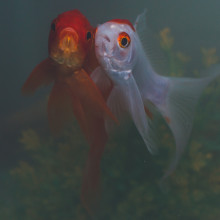
How do fish gills work?
Diana - Well I think they work a little bit like really efficient lungs. So, when a fish opens its mouth, in goes the water, it goes into the gill, and they've got a really thin membrane over which the water flows, and on the other side of membrane, blood is flowing and it's flowing in the opposite direction which means that any oxygen which is dissolved in the water can then go through this membrane into the blood. And they're also really, really, finely made so they've got these things call lamellae and what happens when a fish is out of water, the reason it can't breathe is that these little structures collapse in on each other. And so, it becomes less efficient, there's less surface area exposed to the available oxygen, and they essentially asphyxiate in the air, but yeah, that's how it does it.
Chris - Because human lungs don't collapse like that because they have a surfactant which reduces the surface tension in the water on the surface of these little tiny air sacs, so they don't collapse, but fish don't have that surfactant because obviously, it all would be washing away and they don't need it...

31:34 - Planet Earth Online - Surveying Lake Windermere
Planet Earth Online - Surveying Lake Windermere
with Carol Cotterill & Nick Smart, British Geological Survey
Richard - It really is a beautiful day here on Windermere. Around the centre of the lake, you've got the trees above the water line and the green hills beyond that, and then the mountains. I'm onboard the White Ribbon which is really a slightly large day boat, if you like, but rather than people with picnics, it's crammed with computer monitors and scientific equipment. With me is Carol Cotterill from British Geological Survey. Carol, what are you aiming to do here?
Carol - One of the aims that we're looking at is the lake bed itself and the  modern day processes that are going on, both sedimentary processes, but also, the habitats for the fish, in particular, the Arctic charr. We also want to know what's going on beneath the lake bed so what happened in the past, in particular during the last Ice Age when the British ice sheet came down this far. So did it leave a series of moraines, how quickly did it retreat, and what we can tell about the glacial processes and any changes to the watershed in the drainage into the lake since that time.
modern day processes that are going on, both sedimentary processes, but also, the habitats for the fish, in particular, the Arctic charr. We also want to know what's going on beneath the lake bed so what happened in the past, in particular during the last Ice Age when the British ice sheet came down this far. So did it leave a series of moraines, how quickly did it retreat, and what we can tell about the glacial processes and any changes to the watershed in the drainage into the lake since that time.
Richard - Now we're standing on the aft deck here, but beneath us, there's a hole.
Carol - Yes, that's actually a moon pool. That's what it's called and it's quite unusual on our vessel of this size. Normally, you find them on much larger drilling or geotechnical ships. But here, we decided it was much safer for the equipment if we actually carved a whole in the centre of the boat and we can now deploy our equipment down through the centre of that, so we can keep an eye on it basically and it's semi-protected.
Richard - So if we peer down through this hole, you've got an instrument here suspended beneath the surface of the water. What's that measuring?
Carol - It's painting a picture of the seabed using sound. So what we have are two sonar heads that are angled, opposed to each other, and they send out a number of beams. In total, we have 508 beams. So 508 sound waves effectively radiate out, or pings, as we call them, and when they hit the seabed, they bounce back off the seabed or the sediments or anything on the seabed, and then they come back to us and we hear their returns. And from the time it takes for the sound ping to bounce down and come back to us, we can then calculate the depth that that is.
Richard - Now, we go inside. I think we can see some of the results as they come in. Let's follow the cable from the instrument, into the cabin here and here's Nick Smart and you got two large computer monitors in front of you with this very pretty colour patterns in three dimensions, but that's what we're looking at now, is that right?
Nick - It's directly what's below the boat. We are running along the edge of the contour at the moment. You can see the change in depth which is illustrated by the difference in colours. The red is showing a slightly shallow area then as it gets deeper off to our left-hand side, it goes to the blue.
Richard - Carol, what have you found so far? I was quite surprised when I looked at these that there was a bump in the middle of the lake.
Carol - Across the central section where the current ferry runs, there's actually a high in the lake bed which some to only 2 metres water depth, it's very very shallow in certain parts. We think that this is a remnant of this glacial path that I mentioned before, adn that this could be where there's more solid bed rock that the glacier, the ice sheet, couldn't wear down through.
Richard - This is material the glacier would have dumped there, but it's right across the centre of the lake?
Carol - It is. It is right across the centre of the lake and we've seen it in both the north and the south basin as well, much smaller examples. So material that has come down with the water coming out from the water underneath the glacier so you get this sort of outwash of debris that the glacier's ground up as it's been on it's journey and it leaves these big ridges that are called glacial moraines and there are a number of different types of moraines. In this lake, from a very preliminary interpretation we think we've got terminal moraines which are at the snout or very edge of the glacier but also a series of De Geer moraines that build up underneath the glacier.
Richard - What's the point of doing a study like this?
Carol - It's trying to understand the history and how the lake has evolved, how it might evolve in the future, how the species that live within this lake work with this habitat. Are there certain areas that they prefer to spawn or to feed? Is there the stratification that we find in the lake from temperature, so the top getting much warmer and the bottom quite cooler. Does that have an impact on the species? So it's a whole number of different things.
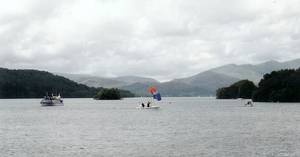 Richard - You're also looking for a monster here.
Richard - You're also looking for a monster here.
Carol - Yes. When we came down and we launched the boat, just over a week ago, we were talking to the lake wardens who were helping us and have provided their jetty, and they asked us to look out for Bow-nessie.
Richard - Bow-nessie?
Carol - Bow-nessie. Apparently, there have been sightings of Bow-nessie and I'm shown some photographs that one of the wardens took a couple of years ago.
Richard - But no sign yet?
Carol - No sign. Bow-nessie has been quite elusive so far and I think she hears us coming and just scurries away to the deeper parts where we're not working.
Chris - And they're still hunting for that, their monster. That was Carol Cotterill from the British Geological Survey and she was with Richard Hollingham, and they were aboard White Ribbon which is the boat surveying Lake Windermere.
Why do tears run down your face slower than a drop of normal water?
Dave - Yeah, it's an interesting one. It's something I've noticed. I think probably the biggest thing is that if you put droplets of water on your face, they tend to be bigger before they run down. And the thing with water flowing anywhere is that a big river will flow a lot faster than a small river. So a big droplet of water has much more gravity pulling on it, so much larger force pulling it down your face, but the forces which slow it down increase much more slowly. So, a big drop will run down your face a lot more and it's possible that the droplets are a lot bigger with normal water than tears because there's probably some surfactants and some proteins, meaning that the droplet will break up and start running down your face when it's much smaller than just normal water. Chris - So to summarise Dave, is it fair to say then we think that water droplets are going to be larger than teardrops which are going to be a bit smaller because there are other chemicals in the tears that mean that the water forms smaller droplets with tears because the smaller droplets are less heavy, so they get dragged down your face slightly more slowly, so they run more slowly. Dave - That is I think which should be going on.
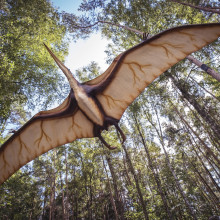
Did dinosaurs and humans coexist as creationists say they did?
That old can of worms. I believe, no. This question always reminds of that film 1 Million Years BC, the one with Rachel Welch, but dinosaurs are known to have become extinct about 65 million years ago. Humans turned up - well, all sorts of varying dates, but sort of very early humans, maybe 2 million years ago then more modern humans maybe 200,000 years ago, so no. Not much of an overlap at all. In fact, none.
Where does the intestinal flora originate?
Chris - The answer is that they come during your first moments of life. Unpleasant as it sounds, if you're a baby born the normal way, your first taste of life is a mouthful of muck, and it's your mum's muck, and it comes from the vagina, the perineum, and even from your mum's bum because there are bacteria that live in that area, all over that area, and as the baby comes out, they go all over the baby's face and mouth. They go then into the baby's intestines and they take up residence in the baby's gut. If you look upon it in one way, this is the perfect way to make sure that the bugs that the baby gets inside it are ideal for the kind of food it's going to be eating later, because the bugs mum has got are genetically right for her. They're also ideal for the kind of food she eats and subsequently, that's probably going to be the same food that the baby is going to eat when it's weaned. So, it make sense to get those bugs and get them inside the baby, and they then take up the right sorts of numbers and densities over time.
By the time you're about early teenage, the spectrum of bugs that you've got living in you and on you are more unique to you than your own fingerprints. And they stay with you for life until you're about age 60 and then they begin to change a little bit as the immune system begins to weaken slightly and the spectrum of those bugs can alter. But yes, the spectrum of bugs that you carry is unique to you and no one else has quite that same spectrum. Even your identical twin, if they have a slightly different diet or environment, can have a slightly different spectrum of bugs.

Is there any matter in an electric current?
There is matter flowing. An electric current is a movement of electrons, which are tiny negatively-charged particles. They're very light compared to the nuclei of atoms: about 1/2000'th of the mass of a proton. But they still do have mass, they are matter and they're moving around.
What happens in electric current is, essentially, you've got a conductor where these electrons can move quite easily. You shove some electrons in - so extra electrons enter at one end of the conductor - using a battery or a generator.
Electrons repel one another so that extra density causes all the other electrons to move away a bit.
This produces a sort of "wave"; you can think of it as a wave of movement, going all the way through to the other end of the conductor.
This wave of movement moves at very close at the speed of light - maybe 0.8 of the speed of light - but the actual electrons themselves are only moving at millimetres per second.
So, the actual movement of electrons is very slow, but there is a movement.
The actual signal moves very quickly because it's a bit like a Newton's cradle, where you hit a ball on one end, and then all the other balls transfer that impact all the way along, until the one on the other end flies away far quicker than any of the balls themselves are moving.

Is ink poisonous?
Chris - Ancient inks were made from crown galls. On oak trees, you'll find "oak apples" - these are galls which are on the wood of the oak tree. They look like little spheres and are made by a parasitic insect or an infection that puts some chemicals into the side of the oak tree. They end up being very rich in tannin so people would harvest them, grind them up and then mix them with iron sulphate, iron 2 sulphate which would then extract the tannins and it meant that the ink was very, very dark, very black when it was first written. It's beautiful.
The problem is that it's also very acidic, so it would rot holes in the ancient manuscripts. This is why when you see ancient manuscripts' photographed, they always have where the decenders are, the Gs and the Ys where the person paused their pen and then reversed over themselves, there's a bit more ink there and that means there's a bit more acid there, and the acid goes into the paper and hydrolyses the cellulose in the paper and makes a hole. And that's why all these ancient manuscripts have got those holes there.
So, I'd say, maybe she just died of iron II sulphate poisoning, because I think if you did have a very intense intake of that, it could be toxic. I've not come across anyone poisoning themselves that way, but I think theoretically, it could be done. Does anyone know? Tell us if you have an experience of iron poisoning...

Why is skin black in sunny countries and white in a cold climate?
Diana - Interesting question. A lot of people think that it's due to vitamin D production. So, what happens is, you get UVB (ultraviolet B) emitted by the Sun, which goes into your skin and your skin makes vitamin D. The darker your skin is, the less UVB can penetrate into it, and the less vitamin D you will make. So, obviously, the further north you are, the paler skin you want where you're getting less sunlight. Also, darker skin can give you protection against sunburn, so people like me will know very well that you've got to pack on the factor 50 if you go anywhere near the sunlight!
But there's also another thing is that skin tone doesn't vary directly with latitude. It's not a totally uniform variation that you will get dark people in very, very sunny places and light people in less sunny places. And a lot of people have argued that there's a huge social part that plays in skin tones, so sexual selection, for example, will determine how pale certain people will be in certain societies.
Chris - Also, Nina Jablonski, who we had on the programme last year, she's Professor of Anthropology at Penn State University in America, has been looking at this whole question and has shown how folate - folic acid - gets degraded by ultraviolet. If you don't have black skin and you're subject to a lot of ultraviolet then you have low levels of folate and it makes you more prone to having a baby with spina bifida, for example. So black people evolved to be black in order to avoid getting that kind of folate degradation. I asked Nina, if you look at the last common ancestor that we and chimpanzees shared - humans and chimps - because chimps have pink skin, what colour was that? And she said they almost certainly had pale skin. So when humans evolved, they had to evolve first to have black skin and then, when we moved out of Africa, 55,000 or whatever years ago, people then re-evolved to have white skin for exactly the reason she said. It's fascinating, isn't it?
Diana - Yeah, that's right. I've heard that too and the very early humans were quite hairy and so, this allowed them to have very pale skin which you know, was covered with nice protective hair.
Chris - A few people are walking around in Cambridge like that today!
What causes red eye when you take a flash photograph?
There's lots and lots of blood at the back of the eye. When you take a photograph, the flash goes into the eye, illuminates the inside of the eyeball, illuminating that bright red, dark, rich red blood, and the light then comes back out of the eye towards the camera through the very big open pupil, and the camera picks it up, which is why your eyes look red.
If you have red eye reduction, what that does is to give a little pulse of light first which causes you to close your pupil, so the amount of light from the flash that can get in to the eye in the first place is reduced, and that cuts down the problem.
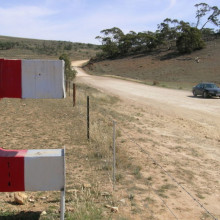
51:09 - How can something appear to roll uphill?
How can something appear to roll uphill?
We put this question to Amos Storkey, a lecturer in the School of Informatics in the University of Edinburgh...
Amos - From the description, I would have guessed that this happened on Morgan Lewis Hill which is in the St. Andrews District, Barbados. In fact, there are quite a few places like this in the world. There are often known by names like magnetic hill or gravity hill, and they are basically places where your eyes deceive you into believing a downhill slope is in fact a slope uphill.
So what makes us think that down is up?
Well first of all, we expect things like trees, lamp posts, buildings, cliffs, and so on to go straight up. If something is almost vertical, the brain may prefer to believe that it is vertical if it can explain the difference by some other means. The thing is that light, wind, and subsidence can affect tree growth and cause trees to slope. Ground movement can also affect things like lamp posts, or telegraph poles often in a consistent way. The overall landscape also makes a huge difference. Sloped or obscured horizons and widening roads can give a perspective effect that a road that curves around is actually headed up. A slight downward slope that goes over an edge can easily be interpreted as a summit. Finally, once the natural environment starts to look like a gravity hill, people come along and deliberately add things like wonky signs to enhance the illusion, and bring in tourists. Well, wouldn't you? The brain sees all this. If there was one sloping a tree, the brain will just put it down to a sloping tree. But if there are a number of sloping trees and nonvertical cliff, and it looks like the road is headed up due to a sloping horizon, that's it. Your brain just says "it's too much of a coincidence" and interprets it as the road going up instead. And because this is all unconscious processing, there is nothing much you can do about it.
- Previous The First Habitable Exoplanet
- Next Tackling Tuberculosis










Comments
Add a comment